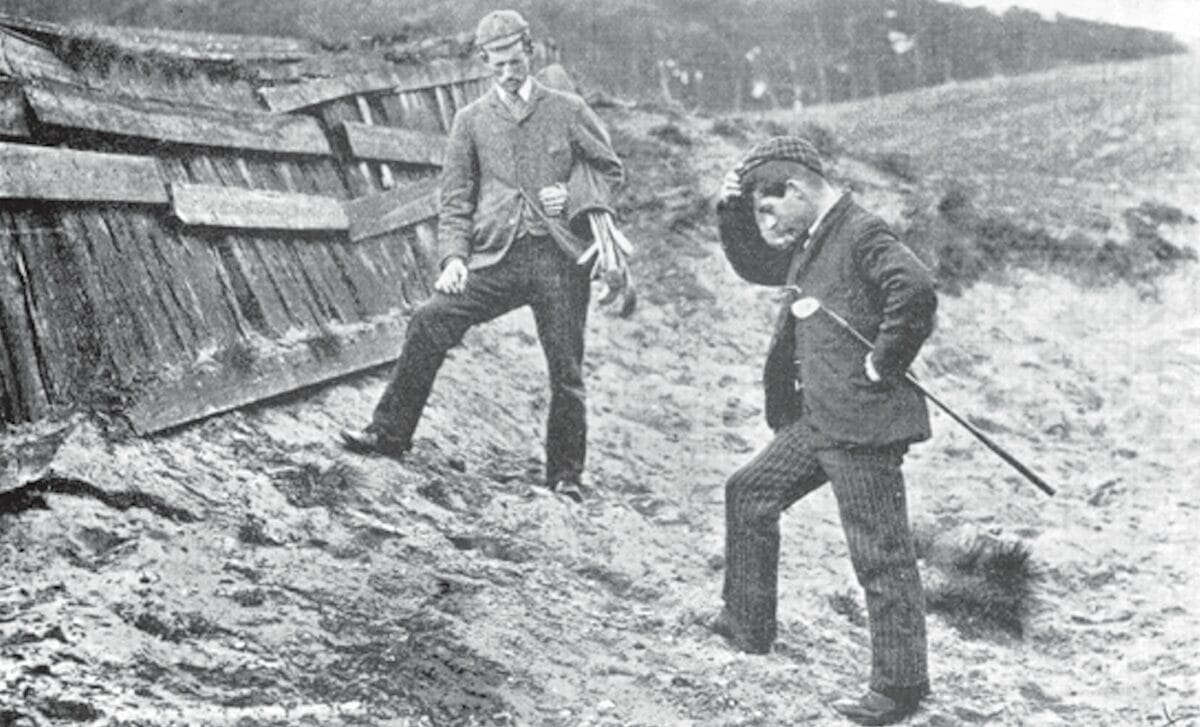Everybody is unlucky to some extent. Some are born unlucky and some have bad luck thrust upon them. Making one’s own luck in life is akin to spinning a roulette wheel. Because there are so few of them, one has to be especially lucky to win a major golf championship.
There are those who have won one or two majors but should have won more: Tony Lema, Greg Norman and Tom Weiskopf spring to mind. There are multi-winners like Ernie Els and Phil Mickelson, short-changed because they coincided with the Tiger era. Sam Snead was victorious 82-times but never won the US Open in spite of being second four times. What about Arnold Palmer and Tom Watson? Both worthy of being in the Grand Slam Club only for the PGA Championship eluding them by the slenderest of margins more than once. What about Jack Nicklaus finishing runner-up on 19-occasions? How unlucky is that?
How many majors would Champagne Tony Lema, the Open Champion in 1964, have won if not killed in an airplane that ploughed into a golf course when he was at the height of his powers? How about Neil Coles who won in 5-decades, but never flew in an airplane even when on Ryder Cup duty? Or, our very own Harry Bradshaw, Christy O’Connor and Michael Moran, Irishmen who had one hand on the claret jug before losing grip.
Bradshaw (1949 ‘bottle’ Open), Doug Sanders (1970 Open), Bobby Clampett (1982 Open), Ed Sneed (1979 Masters) and Jean Van De Velde (1999 Open) had a moment when a major win seemed certain but they couldn’t pull it off. Lee Westwood had his fair share of chances without succeeding. Colin Montgomerie lost two play-offs (1994 US Open and 1995 PGA) as well as failing to par the 72nd hole in the 1997 and 2006 US Opens and losing both by one stroke.
Few golfers today would have heard of possibly the unluckiest of them all? James Douglas Edgar, an impoverished native of Newcastle in the North of England, took up golf (as a 13-years old caddy) to earn a living and escape being sent into the coal mines. His early life in golf mirrored Ben Hogan in that he wasn’t particularly gifted, physically or athletically, but he practiced incessantly and experimented non-stop with every conceivable swing technique.
One day, in 1913, while recovering from a perennial hip injury Edgar experimented with a new swing idea that ran counter to the methods espoused by the stars of that time, notably Harry Vardon. He made the decision to shorten his swing by not moving his hips. Immediately, his golf game soared to a new level to the extent that he won the 1914 French Open by five clear shots at Le Touquet within a year and with no less than his hero, Vardon, JH Taylor, James Braid and Ted Ray all trailing far behind. Vardon declared on the spot: “Douglas Edgar will become the best player in the world”.
Instead, like the aforementioned Michael Moran, Edgar went off to fight in WW1. Moran never returned but Edgar survived (he was assigned to the ambulance corps because of his bad hip) where he witnessed many upsetting things.
An emotionally disturbed man when he came home after the war ended, Doug couldn’t settle. Although, married with two children, an undisciplined lifestyle of booze, gambling and womanizing kept getting him into trouble. Finally, after running out of money for the umpteenth time, he decided to depart for the USA (alone) to try his luck as a ‘golf expert’ and start a new life.
In 1919, golf was only thirty years old in the USA but there were already over one million golfers and 7000-golf courses. A severe shortage in ‘experts’ that could be employed as pros meant Edgar was offered a position at Druid Hills in Atlanta, Georgia within days of his arrival in New York.
Because of the stringent prohibition laws, booze was a scarce commodity in America. Doug had no choice but to sober up and he set about making a name for himself in Southern Golf; playing in lucrative exhibition matches and in local tournaments. Through Stewart Maiden, the Scottish pro at East Lake, he met the teenage sensations, Alexa Stirling and Bobby Jones. They became his pupils and frequent companions on the golf course.
In ‘Bobby Jones on Golf’ (one of the finest books on playing the game ever written) Edgar’s ideas that the elbows should be kept close to one’s chest and the swing should be ‘curved’ and approach the ball from the inside with all full shots played with a fade or a draw, are distinctly Hogan-esque and ahead of their time. It is said that Jones learned far more from Edgar’s ‘Movement’ than he ever did from Maiden, who got most of the credit.
In 1919, Edgar won the Canadian Open by a record 16 strokes (a winning margin that still stands on the PGA Tour) Edgar won in Canada again in 1920 as well as three other big tournaments. He was on his way!
Unfortunately, the last time Edgar’s name would appear on the front page would be in a 1921 Atlanta Journal article about how he was discovered lying in a pool of his own blood in the middle of Atlanta’s West Peachtree Street, believed to be the victim of a never proven, hit-and-run, motor accident.
I won’t spoil the entire story but I will tell you: have no doubt that Edgar’s name would be written large in the annals of golf if he lived a little longer. Highly regarded by his pro golf peers, Douglas Edgar did not live to achieve his potential.
– To Win and Die in Dixie is a fascinating story by Steve Eubanks (every word is true!)























Leave a comment